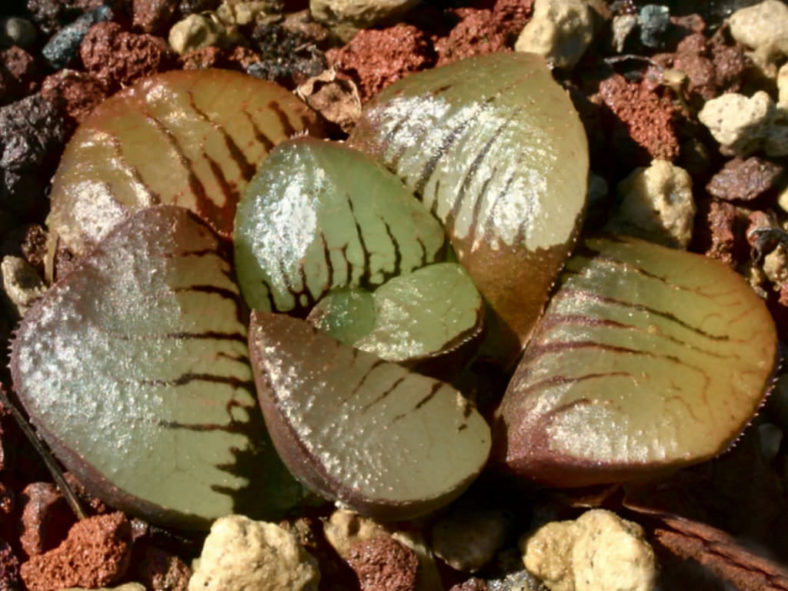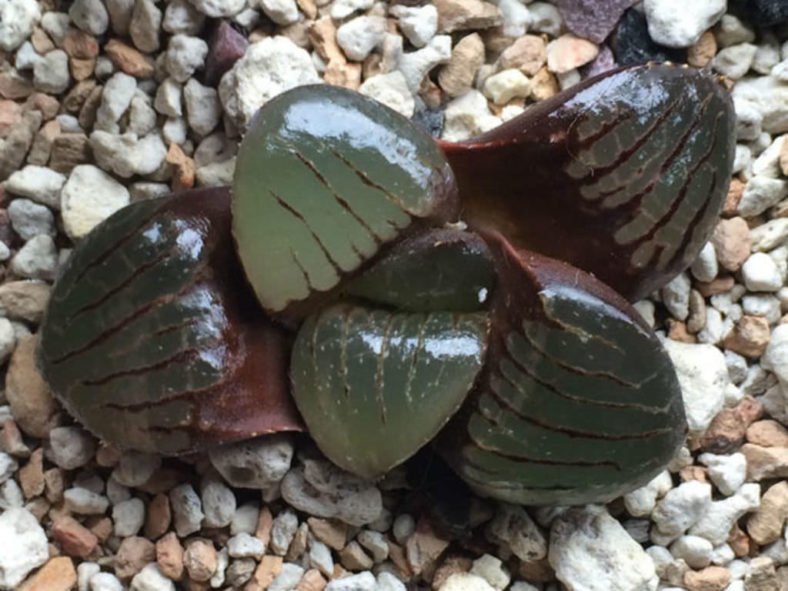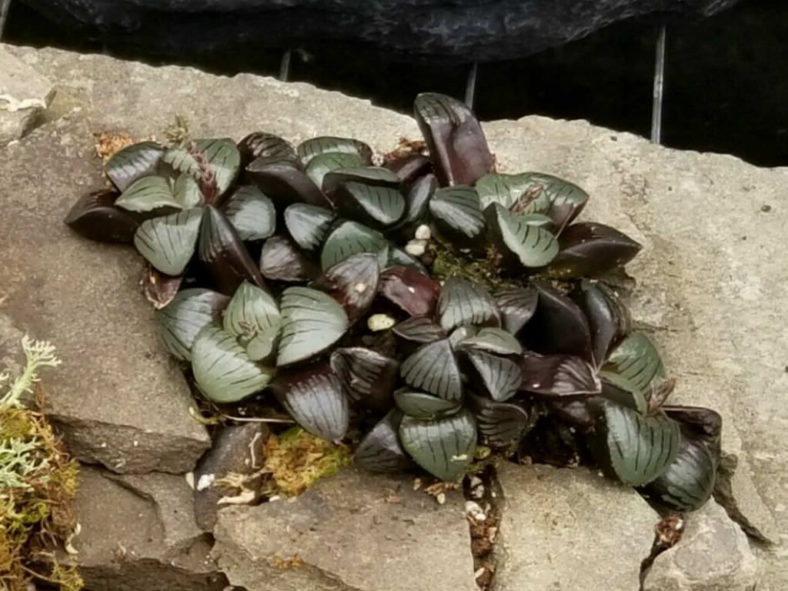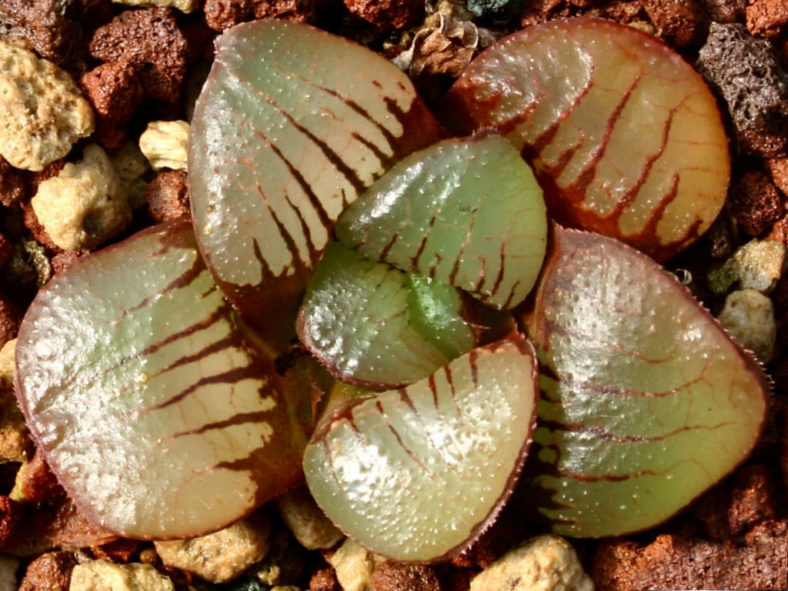Scientific Name
Haworthia springbokvlakensis C.L.Scott
Synonym(s)
Haworthia retusa var. springbokvlakensis
Scientific Classification
Family: Asphodelaceae
Subfamily: Asphodeloideae
Tribe: Aloeae
Genus: Haworthia
Etymology
The specific epithet "springbokvlakensis (spring-boh-kla-KEN-sis)" refers to the location where this species is most commonly known in habitat – Springbokvlakte farm near Steytlerville in the Eastern Cape of South Africa.
Origin
Haworthia springbokvlakensis is native to South Africa. It occurs in fairly dry habitats in the Eastern Cape province and has been collected only at a few localities between Kleinpoort and Steytlerville.
Description
Haworthia springbokvlakensis is a small succulent that forms a rosette of reddish-brown, thumb-like leaves with a translucent end area adorned with longitudinal or net-like venation. The rosette can reach up to 2.8 inches (7 cm) in diameter and usually grows solitary but can produce a few offsets with age. The leaves have somewhat rough margins and can measure up to 1.6 inches (4 cm) long and 0.8 inches (2 cm) wide.
In spring, Haworthia springbokvlakensis produces slender stalks with about 35 two-lipped, spirally arranged flowers with slightly recurved lobes. The flower stalks are simple and can grow up to 13.2 inches (33 cm) long.

Hardiness
USDA hardiness zones 10a to 11b: from 30 °F (−1.1 °C) to 50 °F (+10 °C).
How to Grow and Care
These succulents are not considered difficult houseplants to grow. If you can keep a pot of Aloe alive on a windowsill, chances are you can do the same with a dish of Haworthia. As with all succulents, the most dangerous situation is too much water. They should never be allowed to sit in water under any circumstances. At the same time, these little decorative plants can be grown in interesting containers such as teacups and even baby shoes. If you're given a Haworthia in such a container, ensure the container has adequate drainage.
Haworthias are small, usually between 3 and 5 inches (7.5 cm and 12.5 cm) in height and relatively slow-growing. Therefore, they are often grown in small clusters in wide, shallow dishes. Over time, clusters will naturally enlarge as the mother plant sends off small plantlets. When the cluster has outgrown its dish, repot into a new wide and shallow dish with fresh potting soil in the spring or early summer. This is also the time to take offsets for propagation.
Learn more at How to Grow and Care for Haworthia.
Links
- Back to genus Haworthia
- Succupedia: Browse succulents by Scientific Name, Common Name, Genus, Family, USDA Hardiness Zone, Origin, or cacti by Genus
Photo Gallery
Click on a photo to see a larger version.


